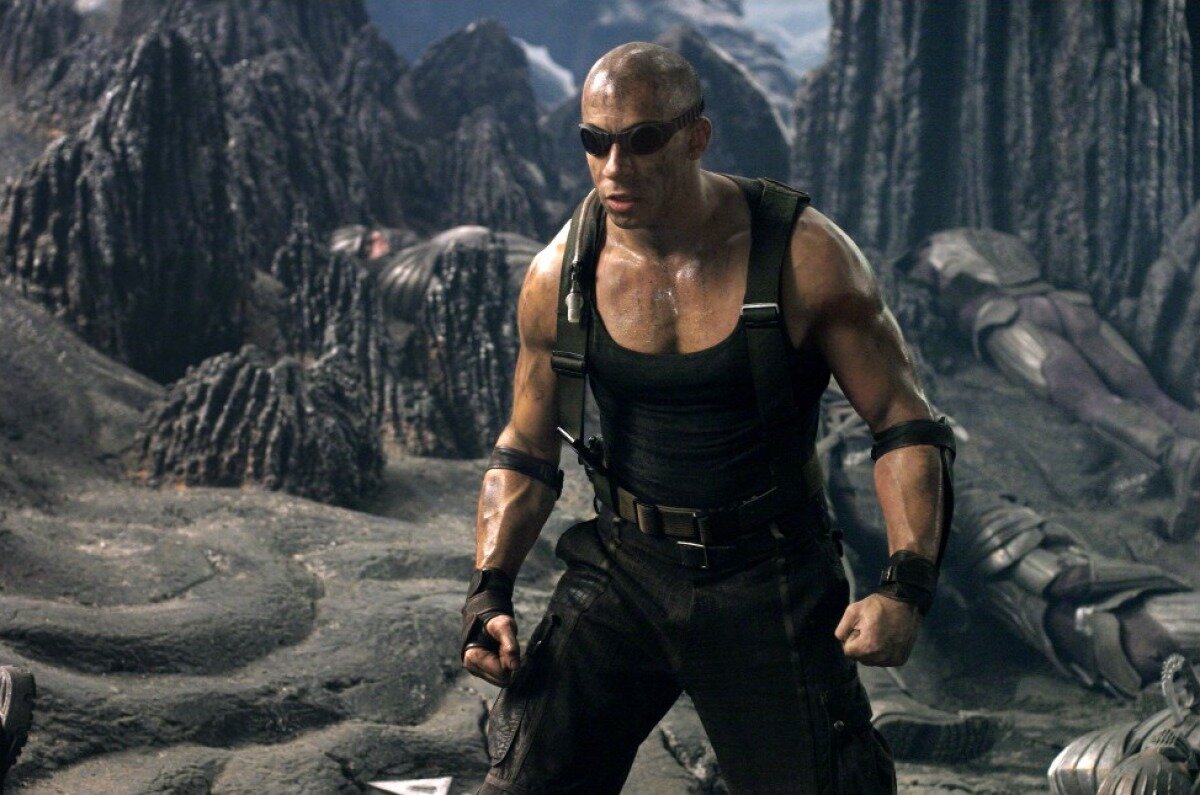The Chronicles of Riddick (2004)

Directed by David Twohy and starring Vin Diesel as the enigmatic anti-hero Richard B. Riddick, “The Chronicles of Riddick” (2004) expands upon the dark and expansive universe introduced in its predecessor, “Pitch Black” (2000). Set in a distant future where various civilizations span the cosmos, the film embarks on an epic journey that blends science fiction, action, and elements of fantasy.
The narrative of “The Chronicles of Riddick” unfolds as Riddick finds himself drawn into a vast intergalactic conflict between humanity, the Necromongers—an imperialistic and religiously zealous empire led by Lord Marshal, portrayed by Colm Feore—and other alien civilizations. Riddick, a notorious escaped convict with exceptional combat skills and night vision abilities, becomes a pivotal figure in the struggle for power and survival across the galaxy.

Thematically, the film explores concepts of identity, destiny, and the dichotomy between light and darkness. Riddick’s character evolves from a solitary survivor in “Pitch Black” to a reluctant hero thrust into a larger-than-life role as he confronts his own past and the challenges of his newfound destiny. The storyline delves into Riddick’s internal struggle with his inner demons and the external threats that test his limits, offering a complex portrayal of a character caught between his instinct for survival and his moral compass.
Central to the narrative is the conflict with the Necromongers, a formidable and mysterious force that seeks to convert or annihilate all who oppose their vision of conquest and transcendence. The world-building in “The Chronicles of Riddick” is expansive, with richly detailed alien cultures, advanced technologies, and intricate political intrigue that add depth to the epic scale of the story. Each setting—from the desolate prison planets to the opulent Necropolis of the Necromongers—immerses viewers in a visually stunning universe teeming with danger and intrigue.

Visually, “The Chronicles of Riddick” captivates with its atmospheric cinematography and imaginative production design. The film’s visual effects bring to life sprawling cityscapes, sprawling spacecraft, and exotic alien landscapes, creating a vibrant and immersive backdrop for the characters’ adventures. Director David Twohy’s direction emphasizes both the grandeur and the grit of the universe, blending practical effects with digital wizardry to craft a cinematic experience that balances spectacle with narrative depth.

Furthermore, the film’s score, composed by Graeme Revell, enhances the emotional intensity and epic scope of the story with its sweeping orchestral compositions and pulsating electronic beats. The music underscores pivotal moments of action, suspense, and introspection, heightening the stakes and drawing viewers deeper into Riddick’s journey across the cosmos.
At its core, “The Chronicles of Riddick” is more than a sci-fi action spectacle—it is a character-driven saga that explores themes of power, redemption, and the search for meaning in a vast and unforgiving universe. Through Riddick’s odyssey, the film challenges viewers to contemplate the nature of heroism and the enduring allure of anti-heroes who defy convention and forge their own paths.

In conclusion, “The Chronicles of Riddick” (2004) stands as a bold and ambitious entry in the sci-fi genre, anchored by Vin Diesel’s compelling portrayal of the iconic anti-hero. With its expansive world-building, dynamic action sequences, and thematic depth, the film remains a captivating exploration of courage, destiny, and the enduring legacy of one man’s journey through the stars.











